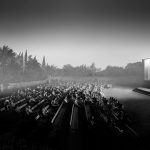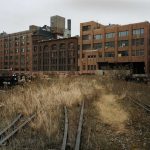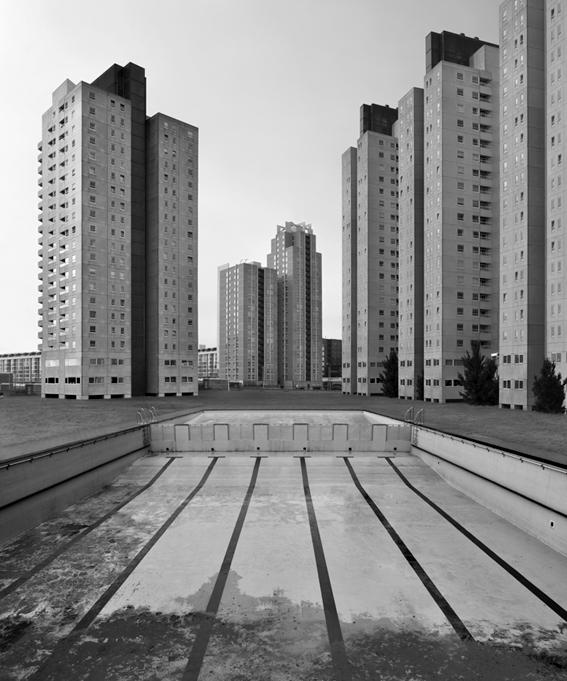Choose a key image from each of your chosen photographers / artists and find out as much as you can about that image and evidence the distinguishing features of the work, the concepts behind it and the context that the work is set in…
You should be on the look out for symbols, codes, conventions and metaphors that may be apparent in the work.
-
Always apply formal analysis to show your understanding of
- Composition (rule of thirds, balance, symmetry)
- Perspective (linear and atmospheric, vanishing points)
- Depth (refer to aperture settings and focus points, foreground, mid-ground and back-ground, leading lines etc)
- Scale (refer to proportion, but also detail influenced by medium / large format cameras)
- Light ( intensity, temperature, direction)
- Colour (colour harmonies / warm / cold colours and their effects)
- Shadow (strength, lack of…)
- Texture and surface quality
- Tonal values ( contrast created by highlights, low-lights and mid-tones)
-
Then think, describe and explain how you can tackle the 4 Assessment Objectives below
AO1: Develop your ideas through sustained and focused investigations informed by contextual and other sources, demonstrating analytical and critical understanding
AO2: Explore and select appropriate resources, media, materials, techniques and processes, reviewing and refining ideas as work develops
AO3: Record ideas, observations and insights relevant to intentions, reflecting critically on work and progress
AO4: Present a personal and meaningful response that realises intentions and, where appropriate, makes connections between visual and other elements
and make an action plan that clearly shows your understanding of a specific way of exploring a type of environment…
————————————————————————————-
Make sure you discuss…
The Concept = idea, intentions and outcomes of the imagery…how has it been interpreted?
The Context = eg : An environmental portrait is a good example of a photo that can combine impact and context. The subject is shown in his or her environment, and the surroundings provide information about the subject. A standard headshot shows what someone looks like, but an environmental portrait can speak volumes about a person
Example : The Auschwitz Album is a perfect example of the importance of knowing the context in which photographs were taken. For instance, the picture below is an innocent picture of women standing together in front of a building. They stand together with their babies and children, and seem happy to look at the photographer who is taking the picture. There is no sign of stress, no hint of violence; most of the women are calm – all except one who looks like she is trying to comfort a baby.

Birkenau, Poland, Jewish women and children in front of Crematorium III, 05/1944
Yet, because we have the benefit of research, we know that these women are standing in front of one of the four massive extermination installations at Birkenau
In the gas chamber of this building (which is located below ground, perpendicular to where the women are standing), two thousand people at a time could be murdered. Behind the double windows of the building visible in the picture are fifteen ovens, vented through the chimney that is partly visible in the upper left-hand corner of the photo, used to turn the bodies of the unsuspecting victims (like those in the photo) into ash.
————————————————————————————-
This is a useful link to help you understand, analyse and explain photographs
http://www.photopedagogy.com/photo-literacy.html
Suggestions for exploring “Environment”…
Tanja Deman // juxtaposition of changing environments // environments as temples of worship and culture //utopia // dystopia
Sculptural (photograph as object, combined with objects and ephemera or photographs as a response to a building or space ie environment)
Marlo Pascual (above)
“Pascual arranges the photos into simple, lackadaisical assemblages that she calls “props,” which rely primarily on found furniture. The images are all painfully elegant, and evoke the seductiveness of old Hollywood. In one photograph (all works untitled, 2009), a nude woman stands behind steamed glass—a scene from a movie descended from Psycho? A photograph of a set of crystal glasses is laser-cut and laid on the floor to look like it was dropped—or shattered by a single delicate stroke of a hammer. A joke about the fragility of the image, it is also a decidedly atmospheric work.”
http://www.artinamericamagazine.com/reviews/marlo-pascual/
Letha Wilson
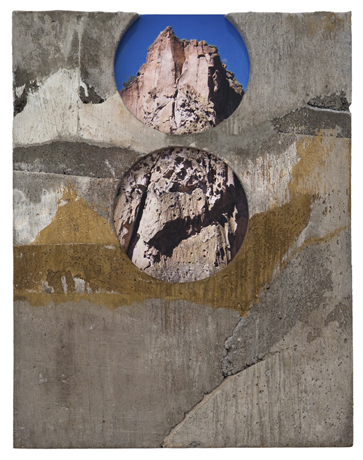
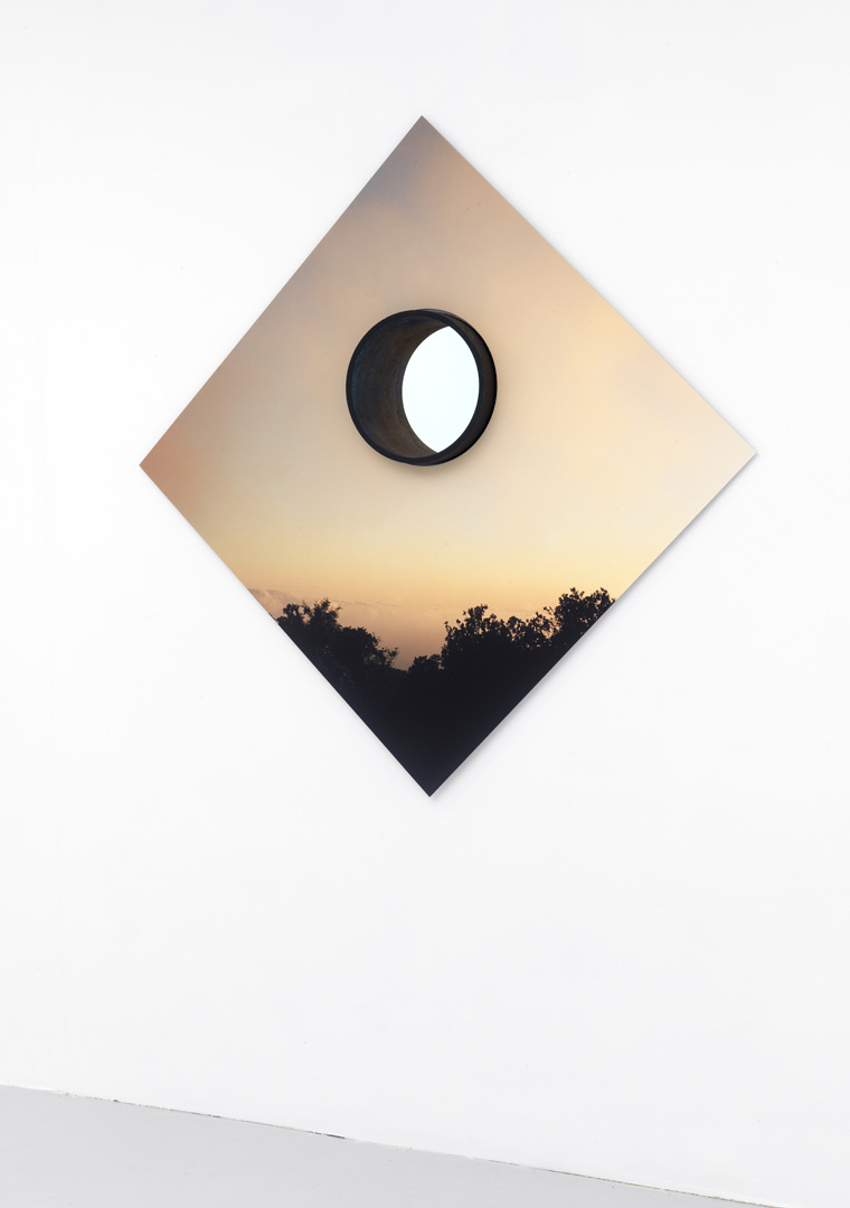
One of a number of contemporary artists who are blurring the lines between photography and other mediums, Letha Wilson makes artworks that are as much sculptures as photographs. Amalgamations of photographic images and spray paint, lumber and concrete, these hybrid objects, medium sized and mostly wall hung, occupy territory also being explored by sculptors such as Rachel Harrison and Virginia Overton. An exhibition of new pieces (all from 2012) showcased Wilson’s adventuresome way with materials.
Thomas Demand
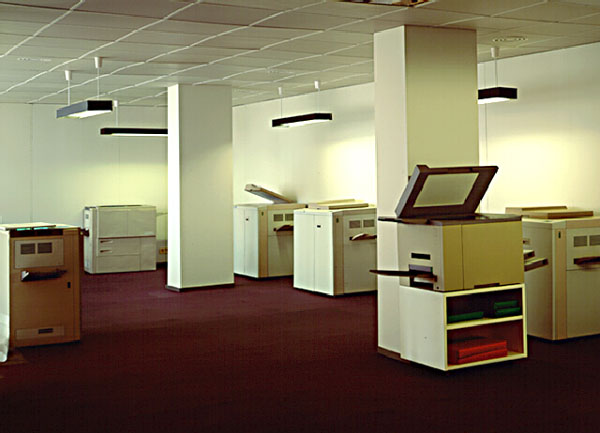
German Photographer Thomas Demand (born 1964) deals with inanimate objects and sterile interiors. He makes models of pre-photographed locations out of styrofoam, card and paper but leaves subtle signs of imperfections, then re-produces the images on a grand scale…in doing he alters the meaning and narrative attached to the environment he is re-presenting…
Laurenz Berges
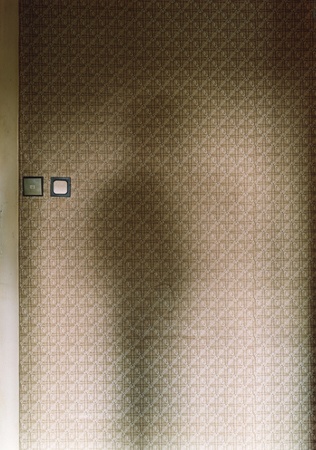
Laurenz Berges is German (Dusseldorf School) photographer. He tackles the notion of loss and removal…and often photographs both personal and shared environments. These can beintimate interiors, or extensive exteriors.
Candida Hofer
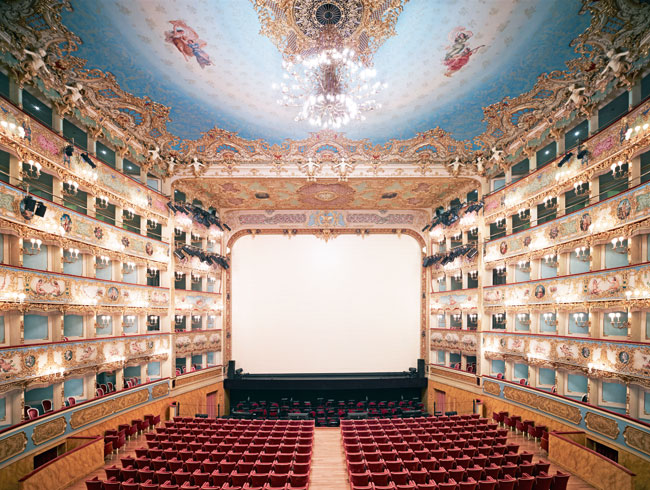
Candida Hofer was a student of Bernd and Hilla Becher in Germany in the 1970’s. Her images are a response to glorious interior environments that explore the contrast between the intention and reality of public and civic spaces…without people interacting with them.
James Casebere

James Caseberes (USA) photographs small scale models that reduce an architectural space to a fragile set of surfaces…they disrupt our belief in the solidity of man-made spaces…what happened ? what happens next ?…we are left disorientated.
Rut Blees Luxemburg
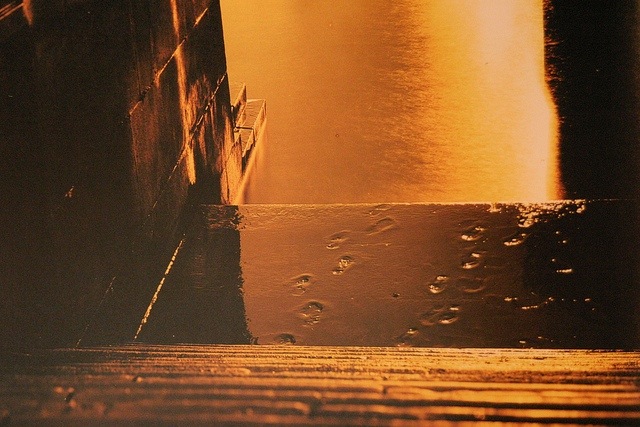
Rut Blees Luxemburg (Germany) uses amber lighting and reflections as found in 1920’s and 1930’s style flash photography…but in a thoroughly modern context.
Chris Killip

Chris Killip is a British photographer. Taken in the late 1970s and early 80s, Chris Killip‘s photographs are a study of the communities that bore the brunt of industrial decline in the North East. This was a response to the decisions of the Thatcher government at the time and explore the environments that people were integrated with in the northern working towns.
https://www.ft.com/content/abe3886c-ba34-11e5-bf7e-8a339b6f2164
Photoshop Experiment 1
- You must show that you can COPY, ADJUST, BLUR and BLEND layers using Adobe Photoshop to create a set of images inspired by IDRIS KHAN / STEPHANIE JUNG

METHOD
- Open a suitable image in Ad-Ph
- CTRL J to copy layer
- Move tool to shift image slightly
- Repeat 2 + 3 5-10 times
- Choose a range of BLENDING OPTIONS eg overlay / multiply / lighten etc
- Adjust OPACITY as needed
- Adjust individual layers as needed
- Add FILTER – BLUR – SHAPE BLUR / SMART BLUR if needed
- Flatten LAYERS
- CROP where suitable
Now make a blog post that illustrates your response to these artists…and explain how and why you arrived at your final response.
Extend your result…
Think about layering your image(s) onto acetate or glass and exploit the transparent qualities vs. opaque shapes, colours and tones
for example

Ardan Ozmenoglu
https://www.pinterest.com/pin/315040936408995781/
Photoshop Experiment 2
- Show that you can use a range of function and techniques to create a composite image like those of Tanja Deman (below).
- Many artists use cut and paste / collage techniques to change the context of their imagery…and challenge the way we look at the world and re-imagine our environment
- Research cut and paste / digital collage techniques and ideas
-
Method
- Select 2/ 3 images that you think you can combine to create a composite image and open in Ad-Ph
- You may need to select one image that you use as your BACKGROUND IMAGE
- Select the object / building / person from another image that you want to add to your BACKGROUND IMAGE
- Click CTRL J
- Use the move tool to drag your selection across, then position
- CTRL T or Free Transform to adjust shape and size of selected object
- Check your layers panel on both images!
- Now blend the edges in…
- Add a LAYER MASK and click to activate it
- Select a brush, adapt the size and reduce your OPACITY to 30%
- Now click on the edges of your object to blend it in smoothly
- Take care with this part…zoom in if you need to
- You can then merge your layers, or flatten and save the image if complete
- Add to your blog
Now Look at Mishka Henner’s work…and his use of satellite imagery, digital mapping and more to create a vision of how our environment is being forced to change…
https://www.nytimes.com/2015/08/30/arts/design/mishka-henner-uses-google-earth-as-muse-for-his-aerial-art.html
Using two frame film / diptychs and juxtaposing images to alter the perception of your environment…
Luke Fowler

Link Here !!!
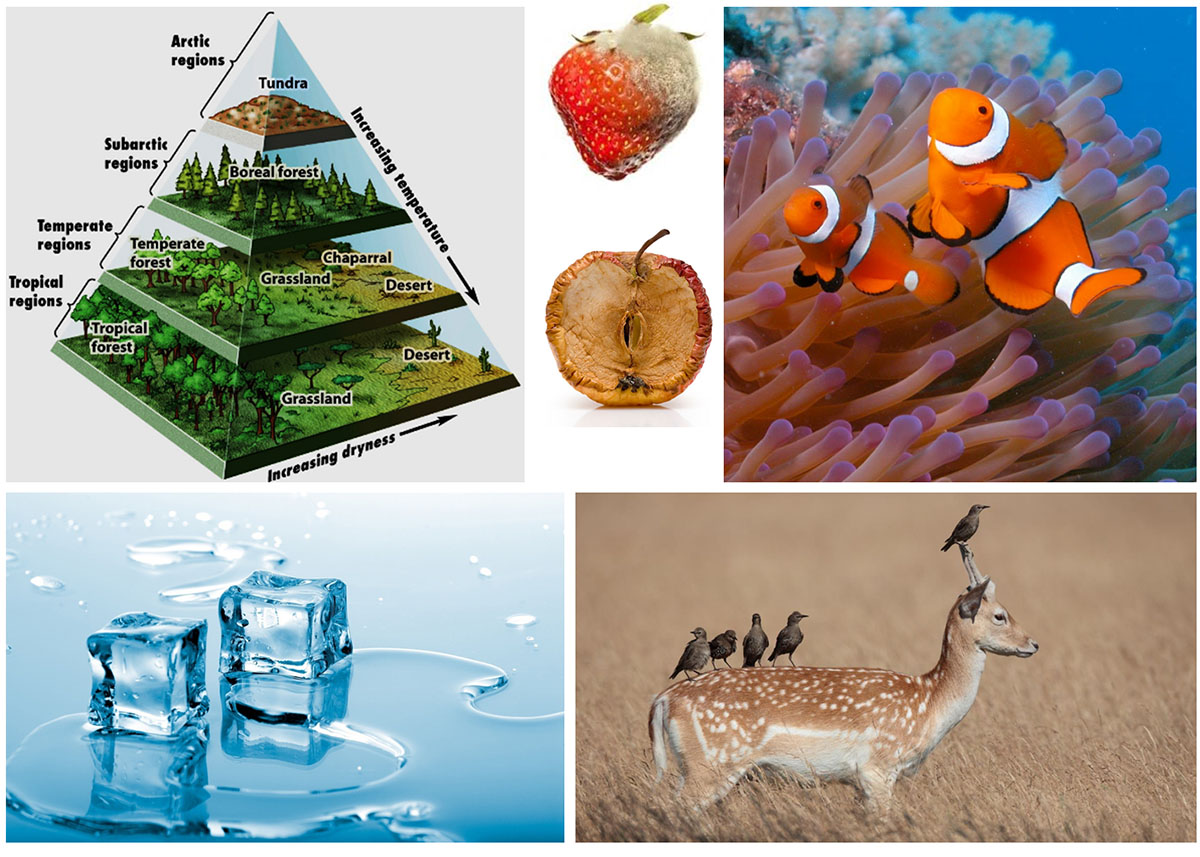




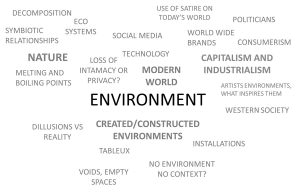



 Depicted above is a quick diagram made in Photoshop, using many different layers, showing how I might set up my final pieces as two separate but equally as important designs. I created this simple example to show how (depending on how my images work together) it might be best to split them up into symbolism and documentary/studio and location photographs and present them as two different projects, done on the same environmental awareness subject. To create this kind of presentation I will print of my finals as a mixture of A3, A4 and A5 pieces and spray mount them onto two separate large white boards.
Depicted above is a quick diagram made in Photoshop, using many different layers, showing how I might set up my final pieces as two separate but equally as important designs. I created this simple example to show how (depending on how my images work together) it might be best to split them up into symbolism and documentary/studio and location photographs and present them as two different projects, done on the same environmental awareness subject. To create this kind of presentation I will print of my finals as a mixture of A3, A4 and A5 pieces and spray mount them onto two separate large white boards.


 – Mixture of stock images and other artists interpretations of this theme.
– Mixture of stock images and other artists interpretations of this theme. 



